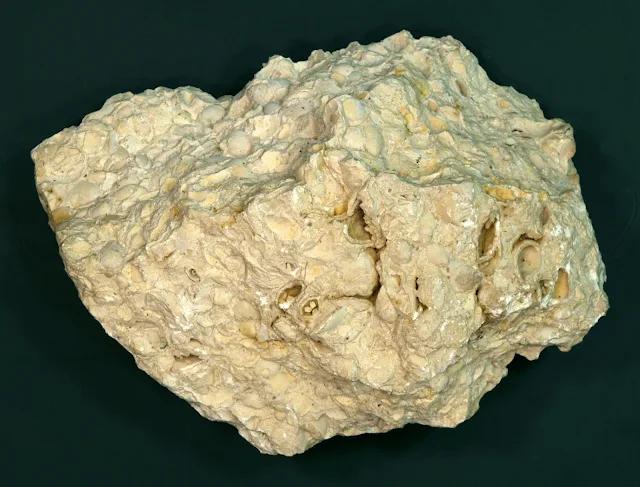 |
| Limestone |
The limes are classified as fat lime, hydraulic lime and poor lime:
(i) Fat lime: It is composed of 95 percent of calcium oxide. When water is added, it slakesvigorously and its volume increases. It is white in colour. Its properties are:
(a) hardens slowly
(b) has high degree of plasticity
(c) sets slowly in the presence of air
(d) white in colour
(e) slakes vigorously.
(ii) Hydraulic lime: It contains clay and ferrous oxide. Depending upon the percentage of clay
present, the hydraulic lime is divided into the following three types:
(a) Feebly hydraulic lime
(b) Moderately hydraulic lime
(c) Eminently hydraulic lime
The properties of hydraulic limes are:
• Sets under water
• Colour is not perfectly white
• Forms a thin paste with water and do not dissolve in water.
(iii) Poor lime: It contains more than 30% clay. Its colour is muddy. It has poor binding property.
The mortar made with such lime is used for inferior works.
IS 712-1973 classifies lime as class A, B, C, D and E.
Lime Cycle:
The process by which limestone (calcium carbonate) is converted to quicklime by heating, then to slaked lime by hydration, and naturally reverts to calcium carbonate by carbonation is called the lime cycle. |
| Lime Cycle |
Ca(OH)2 + CO2 → CaCO3 + H2O.
Calcination Of Lime:
Theoretically, limestone dissociates when heated at 880'C into carbon dioxide and calcium oxide, which is also reversible and the process of heating of limestone for forming lime is called calcination
In limestone calcination, a decomposition process, the chemical reaction is
CaCO3 → CaO + CO2(g)
The burning or calcination of limestone can be carried out in one of the following Ways:
a. Clamps
b. Kilns: i. Intermittent kilns, ii. Continuous kiln